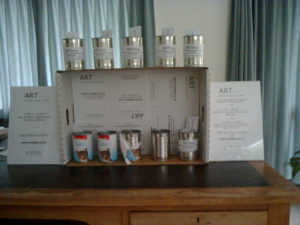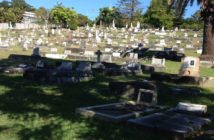 It is the night, the early morning of the 14th of November 2106 and the overnight talk radio host starts to list the locations earthquakes are taking place around New Zealand. Earthquakes here are not unexpected or unusual, it’s the bigger ones, the ones that expose our human vulnerability that still shock us into mortality.
It is the night, the early morning of the 14th of November 2106 and the overnight talk radio host starts to list the locations earthquakes are taking place around New Zealand. Earthquakes here are not unexpected or unusual, it’s the bigger ones, the ones that expose our human vulnerability that still shock us into mortality.
I awake from my mid-night aged-doze and listen as election-night like he calls the towns Later this morning the Boadicea of RNZ, Kim Hill and her lieutenant Guyon Espiner bring us more detail – the places, the people, the damage to infrastructure, the destruction of buildings and the personal loss. Fortuitously the dark hours will have saved many capital Wellington workers from falling building parts and shattered glass.
As a child I lived for sometime in the King Country in the shadow of Ngaruahoe. In my memory is the distant plume as we stood in the paddock watching the eruption. I remember my younger sister sitting on a horse. The volcano Rangitoto and his ring of volcanic associates circling the Auckland region was the background to much of my life – dormant was a word I was always aware of. Years ago at a meeting in a heavily furnitured Wellington room, the furniture jumped. No-one else took any notice.
Now I live high in the Kaimais in Whakamarama, the Bay of Plenty; my son told me the soil here is the wind-borne ash of the historically destructive Tarawera eruptions – and I believe him. Rotorua the internationally known thermal region is at the centre of the Bay and within geographic touching distance of my home. White Island the ever oozing volcanic island lives off our shore. Like people in other volcanic communities I live aware of our relative powerlessness but I am constantly surprised that the hand of Ruakmoko, the traditional God of earthquakes, displays his power elsewhere.
The people of Te Awarua on the East Coast of the North Island, who just months ago saw the face of this angry God, will empathise with those who last night had to run to the high places. Some people in Christchurch will no doubt be cynically shaking their heads as they continue to battle insurance companies and governmental earthquake authorities to repair the homes and properties devastated in those now historic episodes. People in other countries will understand: as I was leaving Cottelston Gallery on Saturday afternoon the Gallery Director Katherine Steeds said “there’s been a large earthquake in Japan” Now I feel the guilt of indifference as I hurried off to do something for my family without a further thought for the Japanese.
But I no longer feel quite so old, fearful and stupid as I look out at the cobblestones behind my house. There’s a small lidded plastic container of matches, food, toilet paper,candles (red tealights), a black rubbish bag with the son’s small discarded tent. Bottles of water line up behind the box. Inside the backdoor is the portable gazebo. One of the many old sleeping bags “stored” for now migrant children rests on the woodbox. I’ve looked at all the down wood from the shelter trees and know I could make a fire pit. I know that a bucket can be an acceptable toilet. None of this gives me any greater sense of power or security, it merely reminds me that this land only tolerates me.
We are only weeks away from our major holiday and tourism season – there will be ongoing economic consequences for many towns. It will be hard for some to see the joy. We can give money, we can give “stuff” most probably money is easier. Most of all we can continue to remember that this is a tragedy for these individuals and communities and not forget that after the radio talk and television images have gone they will still be dealing with this
And at this instant I hear that some unmitigated shits have ripped off a Christchurch home while the family was in tsunami mode on higher ground – there is nothing you can say about that behaviour except “looting”.
I am a spoken word poet. Spoken word poetry is just that – it is written to be spoken. I have two poems I wish to share with the world and ask that you read them and think about the people of New Zealand whose world has been disturbed.
 Both te reo Maori and English are languages of New Zealand. The cultural influences of language, art and belief can mingle – not appropriation and disrespect – appreciation and respect. Many places in this country have two identifying names – those of the Maori who predated the arrival of others and “European” names overlain during colonial times. Increasingly we are acknowledging the traditional Maori geographic identifiers. A glossary of the te reo Maori words is below for those of other places.
Both te reo Maori and English are languages of New Zealand. The cultural influences of language, art and belief can mingle – not appropriation and disrespect – appreciation and respect. Many places in this country have two identifying names – those of the Maori who predated the arrival of others and “European” names overlain during colonial times. Increasingly we are acknowledging the traditional Maori geographic identifiers. A glossary of the te reo Maori words is below for those of other places.
In the East Coast morning dawn….
Ruamoko slowly unfurls the smallest finger of his left hand
the earth trembles
Ruamoko opens his hand to examine the paua pearl of his ancestor
the earth groans
Ruamoko exhales at the sight of the glowing black shining
the earth heaves
Papatuanuku moves her body to accommodate these small gestures
the fluid of Tangaroa boils
The children of the land run to their maunga and wait.
Mokopuna
Why did my parents not run screaming back to the civilisation of their home?
Because this land grabs you.
This land takes you
This land holds you as much as it holds the descendants of Mataatua.
You sink into the fern
Drink the water
Lie on the yellow-white sand and hear the waves tell you
You are home
You have arrived.
You are now here in your land of Aotearoa.
You bring your myths and legends of kumara and Christmas
Of Iho and God
Of tribe and clan.
You build whare and home
You hold your children
You share your love
You share your food
You acknowledge the sea
The shining – the path of migration
You become the mokopuna of Aotearoa.
Glossary:
Ruamoko is the God of earthquakes
Papatuanuku is the Earth Mother
Tangaroa is the God of the sea
Paua is the large shellfish abalone. The polished pearlescent inner shell is prized for jewellery and embellishment.
Maunga is a mountain.
Mokopuna – grandchildren
Mataatua – one of the major migratory canoe
Aotearoa is the te reo Maori name for New Zealand
Kumara – sweet potato
Iho – the principal God
Whare – a traditional home/dwelling
 Rosemary Balu. Rosemary Balu is the founding and current editor of ARTbop. Rosemary has arts and law degrees from the University of Auckland. She has been a working lawyer and has participated in a wide variety of community activities where information gathering, submission writing, community advocacy and education have been involved. Interested in all forms of the arts since childhood Rosemary is focused on further developing and expanding multi-media ARTbop as the magazine for all the creative arts in the Bay of Plenty, New Zealand.
Rosemary Balu. Rosemary Balu is the founding and current editor of ARTbop. Rosemary has arts and law degrees from the University of Auckland. She has been a working lawyer and has participated in a wide variety of community activities where information gathering, submission writing, community advocacy and education have been involved. Interested in all forms of the arts since childhood Rosemary is focused on further developing and expanding multi-media ARTbop as the magazine for all the creative arts in the Bay of Plenty, New Zealand.
I have a personal project Do not leave me hanging by a thread spoken word poetry to raise funds for a specific charity working in international zones of conflict. It is somehow easier to come to terms with the devastation of nature than the incoherent and ongoing devastation we humans create and impose on each other. My project has the support of some of the other ARTbop contributors and creatives: there will be more information and poetry soon. We’ll use You Tube, our ARTbop website and our ARTbop facebook pages.

In the meantime, one of our ARTbop contributors, creator and host of the NZ Hard Rock Show, the veteran musician Kingsley Smith in association with other local musicians has organised ROCK FEST at Totara Street, Mount Maunganui. This is a fund-raising event for the New Zealand Cancer Society. As the Kingsley created promo posters say: 6 bands – 6 hours – 10 bucks ($20 if you wait to buy them on the door). It’s on the 26th November at 6pm.





